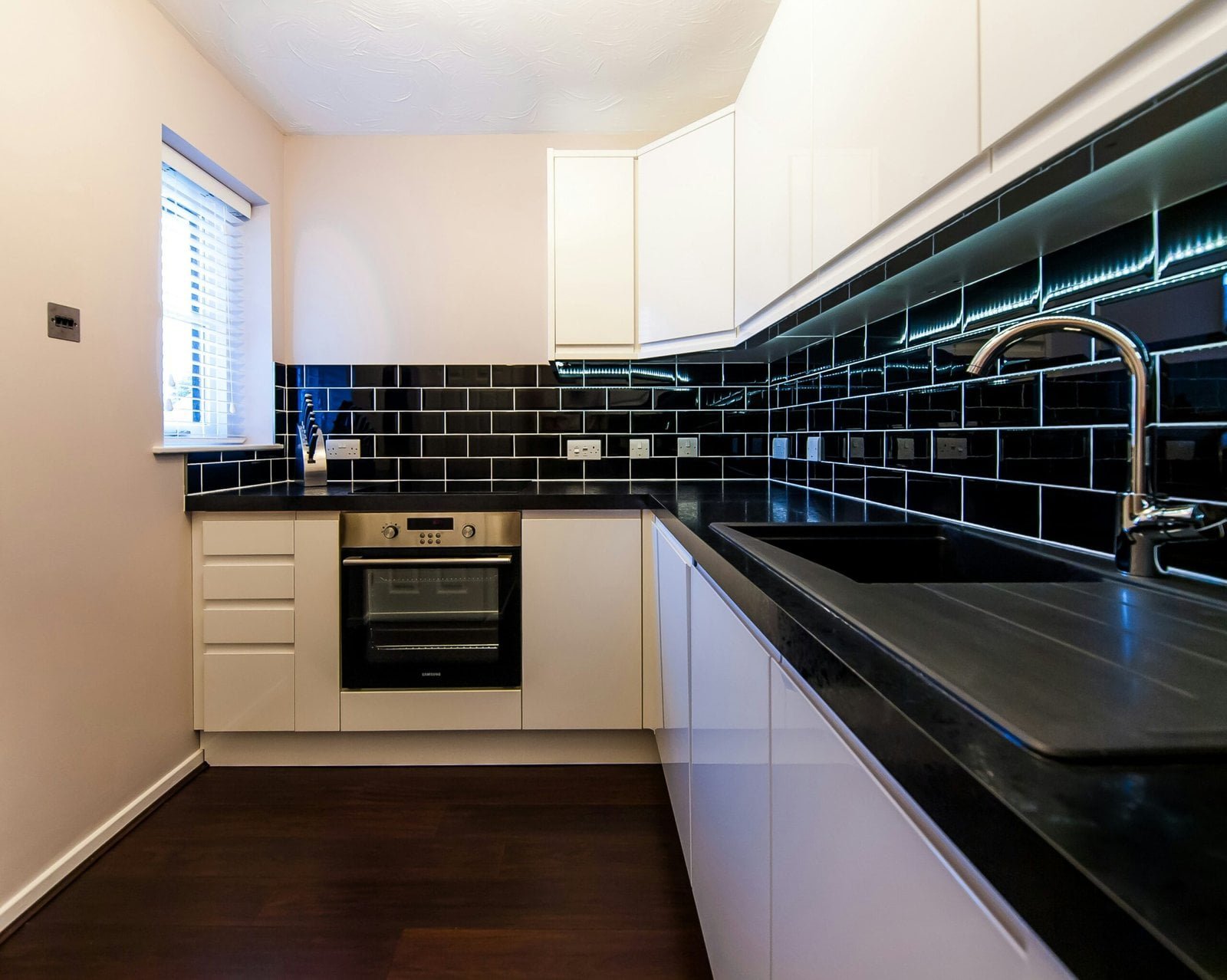Poor Surface Preparation
Proper surface preparation is a critical step in the process of laying tiles on the floor. Ensuring that the floor is clean, level, and free of any imperfections is paramount for achieving a durable and aesthetically pleasing result. One of the most common mistakes made during this stage is neglecting to remove old adhesive. Residue from previous installations can interfere with the adhesion of new tiles, leading to uneven surfaces and compromised durability.

Please, read our post and do not forget to check our YouTube channel “Grig Stamate”:
https://www.youtube.com/@GrigStamate
You will find there, thousands of designing, furnishing, and decorating ideas for your home interior and outdoors.
Allow me to mention one of them:
40 Amazing White Home Interiors with Light Color Floors (video)
Another frequent oversight is failing to address cracks or holes in the floor. These imperfections can cause significant problems if they are not fixed before tiling. Cracks can expand over time, causing tiles to loosen or break, while holes can lead to uneven tiling and poor adhesion. It is essential to fill any cracks or holes with appropriate filler and ensure they are completely dry and smooth before proceeding.
Ensuring that the floor is level is another crucial aspect of surface preparation. An uneven floor can result in misaligned tiles, which not only look unprofessional but can also be a tripping hazard. Using a leveling compound can help address any discrepancies, creating a flat and even surface ready for tiling.
Additionally, applying a primer is an often overlooked but important step. A primer helps to promote better adhesion between the tile adhesive and the floor, ensuring a stronger bond. Failing to use a primer can result in tiles lifting or becoming loose over time, reducing the longevity of the tiled floor.
Inadequate preparation can lead to several issues, including uneven tiles, poor adhesion, and ultimately, a shorter lifespan for the tiled floor. By taking the time to properly prepare the surface, including cleaning, leveling, and addressing any imperfections, you can avoid these common pitfalls and ensure a successful tiling project that stands the test of time.

2. Incorrect Tile Placement and Spacing
One of the most crucial steps in laying tiles is planning the layout meticulously before commencing the actual work. A well-thought-out layout ensures not only an aesthetically pleasing result but also contributes to the structural integrity of the tiled floor. Without a proper plan, you risk encountering common errors such as uneven gaps and misalignment, which can detract from the overall appearance and functionality of the floor.
A frequent mistake is the neglect of spacers during tile placement. Spacers are indispensable tools that help maintain consistent spacing between tiles, ensuring uniformity throughout the floor. Without them, it is easy to end up with tiles that are too close together or too far apart, leading to uneven gaps. This not only looks unprofessional but can also cause problems down the line, such as tiles shifting or cracking due to stress and inadequate support.
Consistent spacing is not merely an aesthetic concern; it is vital for the floor’s durability. Uneven spacing can compromise the structural integrity of the floor, making it more susceptible to damage and reducing its lifespan. Therefore, it is essential to use spacers appropriately and to check the alignment of tiles regularly as you work.
To ensure correct tile placement, begin by measuring and marking the floor. Start at the center of the room and work your way outward, laying a dry run of tiles without adhesive to visualize the layout. This allows you to make necessary adjustments before committing to the final placement. Use a chalk line to mark guidelines on the floor, which will serve as a reference for keeping tiles aligned.
Incorporating these practices into your tiling project can significantly enhance the result, ensuring a beautiful and durable tiled floor. Accurate measurements, the use of spacers, and careful marking are the keys to avoiding the pitfalls of incorrect tile placement and spacing.
Using the Wrong Adhesive or Grout
One of the most critical aspects of laying tiles is selecting the appropriate adhesive and grout. The market offers a variety of adhesives, each designed for specific types of tiles and conditions. For instance, cement-based adhesives are ideal for ceramic and porcelain tiles, providing strong bonding in both dry and wet environments. On the other hand, epoxy adhesives are best suited for areas exposed to high moisture, such as bathrooms or kitchens, due to their superior water resistance and durability.
Similarly, the choice of grout is equally important. Sanded grout is recommended for tile joints wider than 1/8 inch, as it provides greater stability and is less prone to cracking. Unsanded grout, however, is suitable for narrower joints and delicate tiles like glass or polished stone. Using the wrong type of grout can result in issues such as cracking, discoloration, or even tiles becoming loose over time.
Failure to match the adhesive and grout to the specific needs of your project can lead to several problems. For example, using a standard adhesive in a high-moisture area could cause the tiles to come loose as the adhesive deteriorates. Similarly, opting for a low-quality grout in a high-traffic area might result in the grout cracking and crumbling, compromising the integrity of the tiled surface.
To choose the right products, consider the type of tiles being used, the environmental conditions, and the expected foot traffic. For instance, in areas with significant moisture exposure, such as showers, an epoxy adhesive and a water-resistant grout are advisable. In contrast, for a living room floor with moderate traffic, a cement-based adhesive and sanded grout would be sufficient.
Consulting with a professional or referring to the manufacturer’s guidelines can also provide valuable insights into the best adhesive and grout options for your specific project. By carefully selecting the appropriate materials, you can ensure a long-lasting, durable, and aesthetically pleasing tile installation.
Neglecting to Seal and Maintain
One of the most critical steps in ensuring the longevity and durability of your tiled floor is proper sealing and ongoing maintenance. Sealing the tiles and grout after installation serves as a protective barrier against stains, moisture, and other potential damage. Unfortunately, a common mistake many homeowners make is either skipping this essential step or using inappropriate sealing products.
Sealing your tiles and grout helps to prevent water from seeping into the porous materials, which can lead to mold growth and structural damage over time. It also makes the surface easier to clean and less likely to stain. When selecting a sealant, it’s important to choose one that is suitable for the specific type of tile you have installed. For instance, natural stone tiles require a different kind of sealant than ceramic or porcelain tiles.
Routine maintenance should include resealing your tiled floor at regular intervals. The frequency of resealing depends on the type of tiles and the amount of foot traffic the area receives. As a general guideline, high-traffic areas should be resealed every one to two years, while less frequented spaces can be resealed every three to five years. Always follow the manufacturer’s recommendations for the best results.
In addition to sealing, regular cleaning is vital for maintaining the appearance and integrity of your tiled floor. Use a pH-neutral cleaner to avoid damaging the tiles and grout. Avoid harsh chemicals and abrasive cleaning tools that can scratch or dull the surface. For minor repairs, such as fixing cracked tiles or re-grouting small sections, address these issues promptly to prevent further damage.
In essence, neglecting to seal and maintain your tiled floor can lead to a host of problems, from aesthetic issues to significant structural concerns. By taking the time to properly seal and care for your tiled surfaces, you can ensure their beauty and functionality for years to come.
Other related posts from our website:
https://howtobuildahouseblog.com/this-is-how-you-drill-into-tiles-a-step-by-step-guide/
https://howtobuildahouseblog.com/choosing-floor-tiles-the-most-important-criteria/
Thank you so much for your attention.
Stay tuned. We will upload many other amazing posts to our website and videos onto our YouTube channel.
Thank you so much.
for your time and attention.
Best Regards
See you to another post,
Bye, Bye


